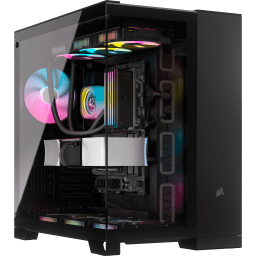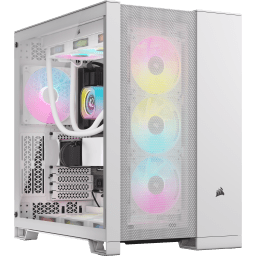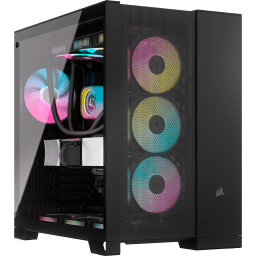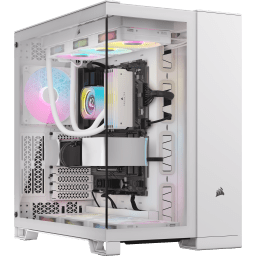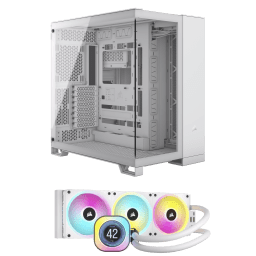BLOG
Dual Chamber vs Standard PC Cases – What's the Difference?
Should you find yourself with a little extra room on your desk, read on because a dual chamber PC case might make your PC-building experience a little more pleasant, all while offering some added performance benefits.
What is a Dual Chamber PC Case?
Dual chamber cases are defined by their name—they have two chambers. One chamber will typically hold all your hardware, fans, and radiators, while the second chamber, which we can dub “the chamber of shame”, houses your hard drives, power supply, and the mess of cables that come with your PSU (check out our iCUE LINK lineup if you're keen to get rid of some of those pesky cables).
What are the Benefits of a Dual Chamber PC Case?

Cable management
In a typical PC case, you will often have a gap between the motherboard tray and the rear panel where all your wiring and fan controllers (and possibly your hard drives) go. With the limited room behind the motherboard, it can often become incredibly cramped. You might have seen builds where the side panel is difficult to put back in place, often bulging out in the middle due to excessive cables pressing against it.
Suddenly, "chamber of shame" doesn't sound so bad, right? Compared to a regular tower case, where you would have to run all these wires and controllers behind the motherboard tray, you'll be happy to have the extra room to hide everything.

Ease of Building
But cable management isn't the only benefit of a dual chamber PC case. Building your PC in this type of case is especially easy as they are typically very roomy for mounting motherboards and coolers. If you would like to see how much we fit into our 6500X case, you can check out the video below:
On top of boasting more room for mounting components, you'll also find that cable management is much easier in a dual chamber case, thanks to the extra space for longer cables. It's also quicker to access your power supply since it's positioned right against the side panel once you open it.
Performance
Lastly, but not least, performance can be increased in a dual chamber case. In a typical case, you'll often see fan mounts in the front, top and a single in the back. In a dual chamber case, where the power supply has been moved from the bottom to the side chamber, you'll now also gain extra fan slots at the bottom of the case. These can be used as intake fans to cool your graphics card with fresh air or for extra radiator mounts.


Radiator and fan compatibility of the 6500D dual chamber case
Radiator and fan compatibility of the 5000D single chamber case
A CIKKBEN SZEREPLŐ TERMÉKEK
